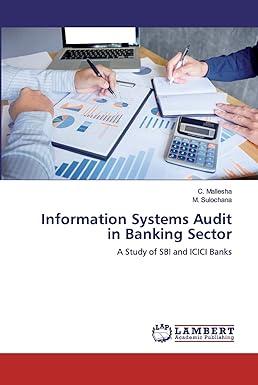Question
Question 2 Accounting Theories GiGoGu Ltd has prepared their draft financial statements for the 2022/23 financial year. The following is an extract of information from
Question 2 Accounting Theories
GiGoGu Ltd has prepared their draft financial statements for the 2022/23 financial year. The following is an extract of information from the draft statements:
| '$000 | |
| Total Assets | 5350 |
| Total Liabilities | 3400 |
| Shareholder's Equity | 1950 |
| Net Profit | 140 |
GiGoGu Ltd have an unsecured 10-year loan of $2 million with Lamack Finance. The loan agreement contains restrictive covenants that give Lamack Finance the right to recall the loan if the debt to equity ratio exceeds 1.6 or the dividend payout ratio exceeds 25%.
The CEO of GiGoGu Ltd, Max Power, has fixed base remuneration of $300,000 per year. He will receive a further $250,000 payment in the 2022/23 financial year if he meets the performance hurdles of both 7.5% net profit to total assets and a minimum dividend payout of 20% in the 2021/22 financial year.
The following amounts, which were incurred at year-end, have been included in the draft financial statements above.
$350,000 Development Expense for a software development project that hasnt yet been deemed to meet all of the para 57 criteria of AASB 138
$120,000 of Repairs and Maintenance Expense for the factory machinery for modifications performed to the machinery.
At the initial meeting with Max Power to discuss the draft financials, Max states that he believes the modifications to the factory machinery should be capitalised rather than expensed, and that he also believes the software development project has already reached the point of feasibility and therefore the costs can be capitalised. You disagree but arrange a subsequent meeting to discuss the issue.
At the subsequent meeting, Max says that he has had a closer look at the numbers now and would be willing to expense the repairs and maintenance costs, but he strongly believes the software development should be capitalised, and asks you to revise the financial statements accordingly for the software development.
Additional information:
The following formulae are used in this question:
Debt to equity ratio = total liabilities / total shareholders equity
Profit % of total assets = (net profit / total assets) x 100%
Dividend payout ratio = (dividend / net profit) x 100% (Note: ignore any tax effects in this question)
Required:
a) Revise the extract from the draft financial statements to show the effects of (i) capitalising both the development and repair costs, and (ii) capitalising just the development costs.
b) Calculate the debt to equity ratio, profit as a % of total assets, and dividend payout ratio for the three sets of data [original, revised (i) and revised (ii)].
c) Explain the CEOs actions with reference to your calculations in parts (a) and (b) and Positive Accounting Theory (max. 250 words).
d) The CEO makes a further proposal to change the useful life on the factory for depreciation purposes from 10 years to 20 years, explaining that 10 years is quite conservative, and 20 years is the industry standard. There is no underlying change to the condition or capacity of the factory. This change in accounting policy for Property, Plant and Equipment would need to be disclosed. If all else remained equal, explain how the share price would respond to this change under
(i) the mechanistic hypothesis and
(ii) the semi-strong form of market efficiency (max. 120 words).
Step by Step Solution
There are 3 Steps involved in it
Step: 1

Get Instant Access to Expert-Tailored Solutions
See step-by-step solutions with expert insights and AI powered tools for academic success
Step: 2

Step: 3

Ace Your Homework with AI
Get the answers you need in no time with our AI-driven, step-by-step assistance
Get Started


